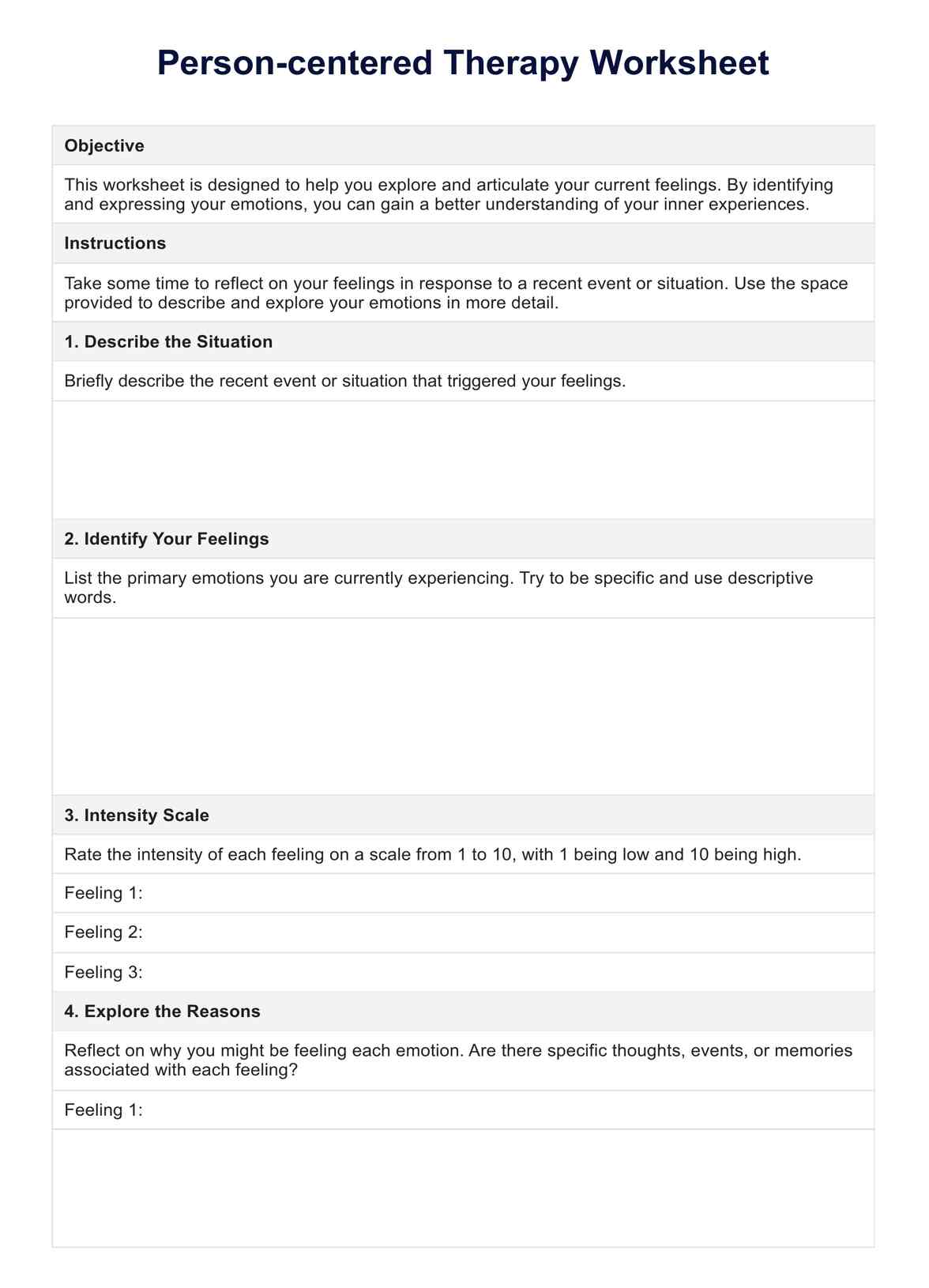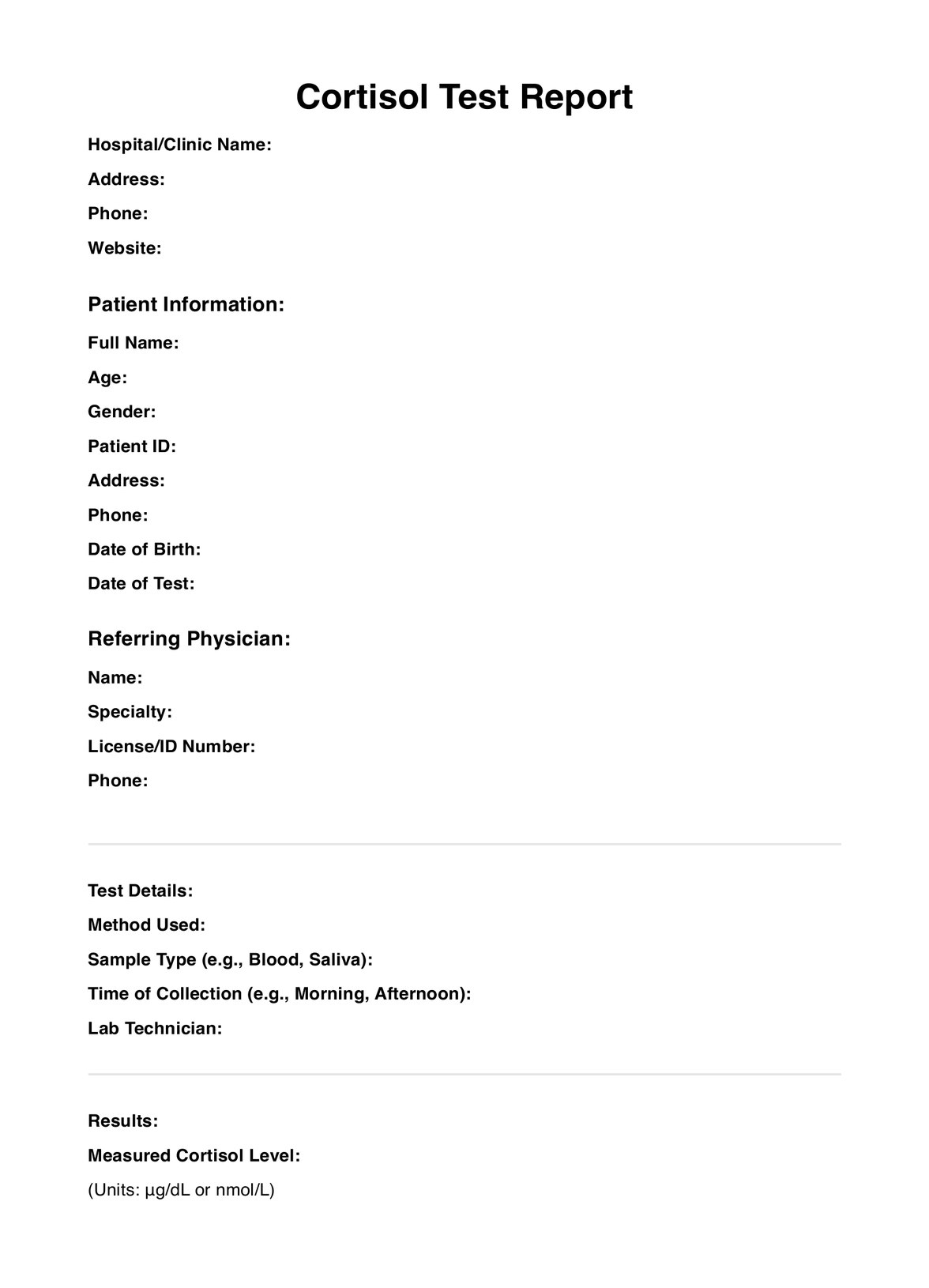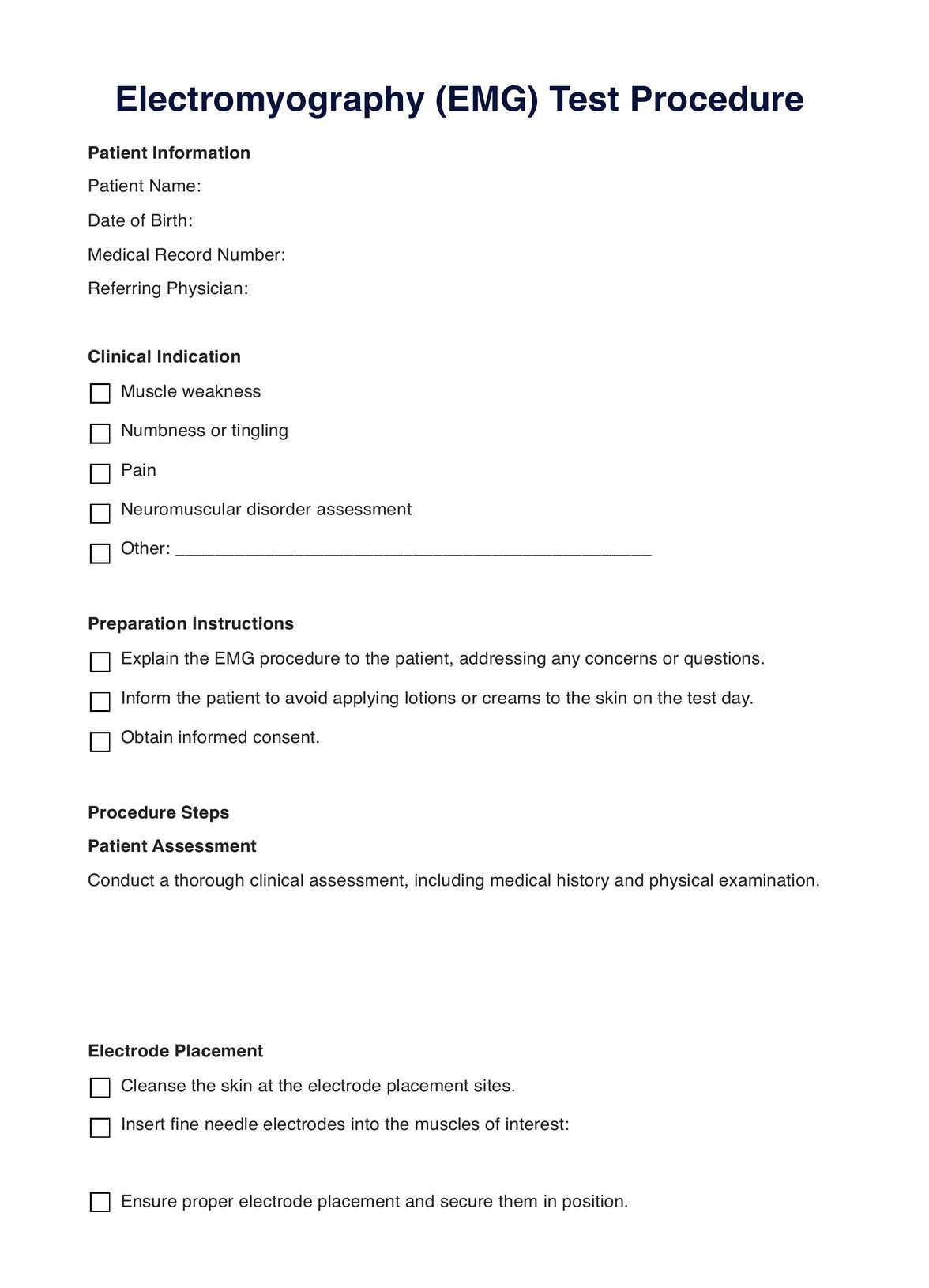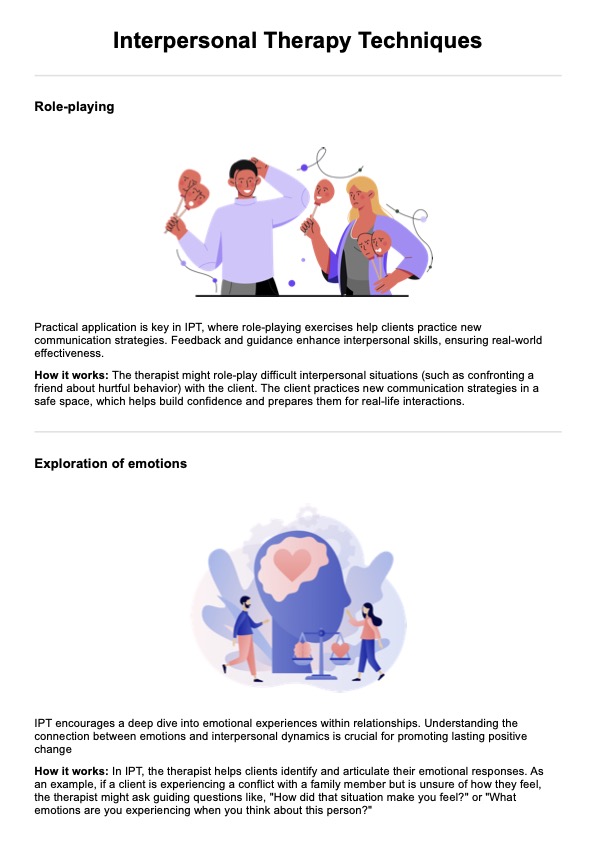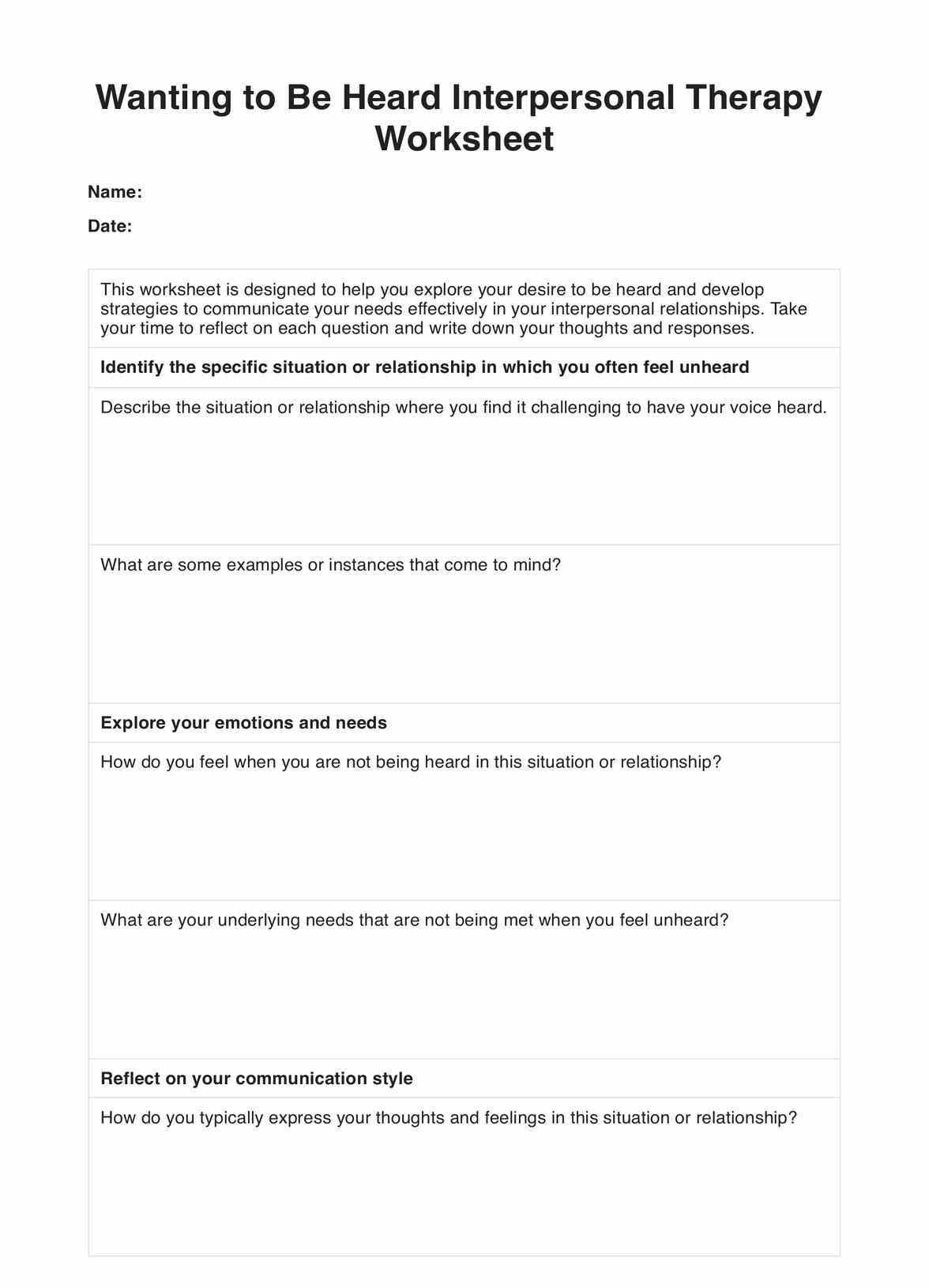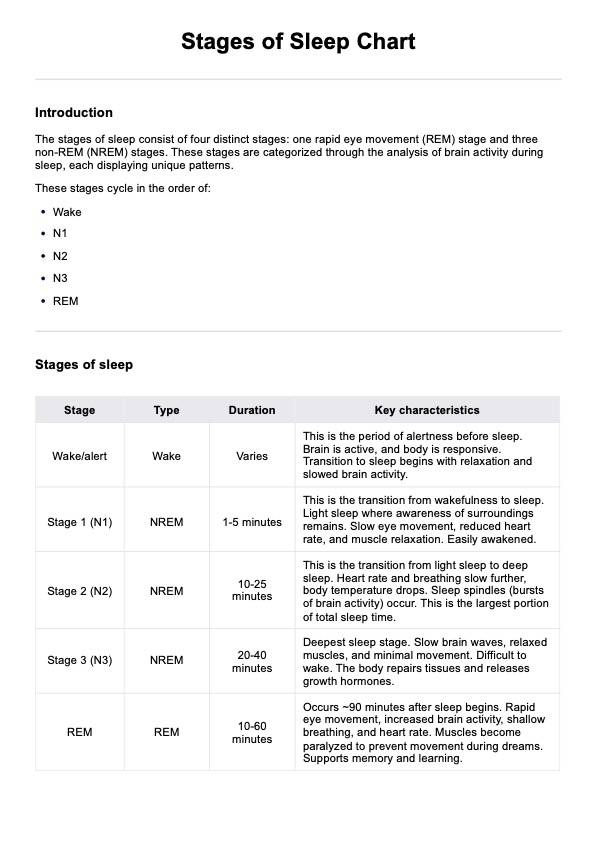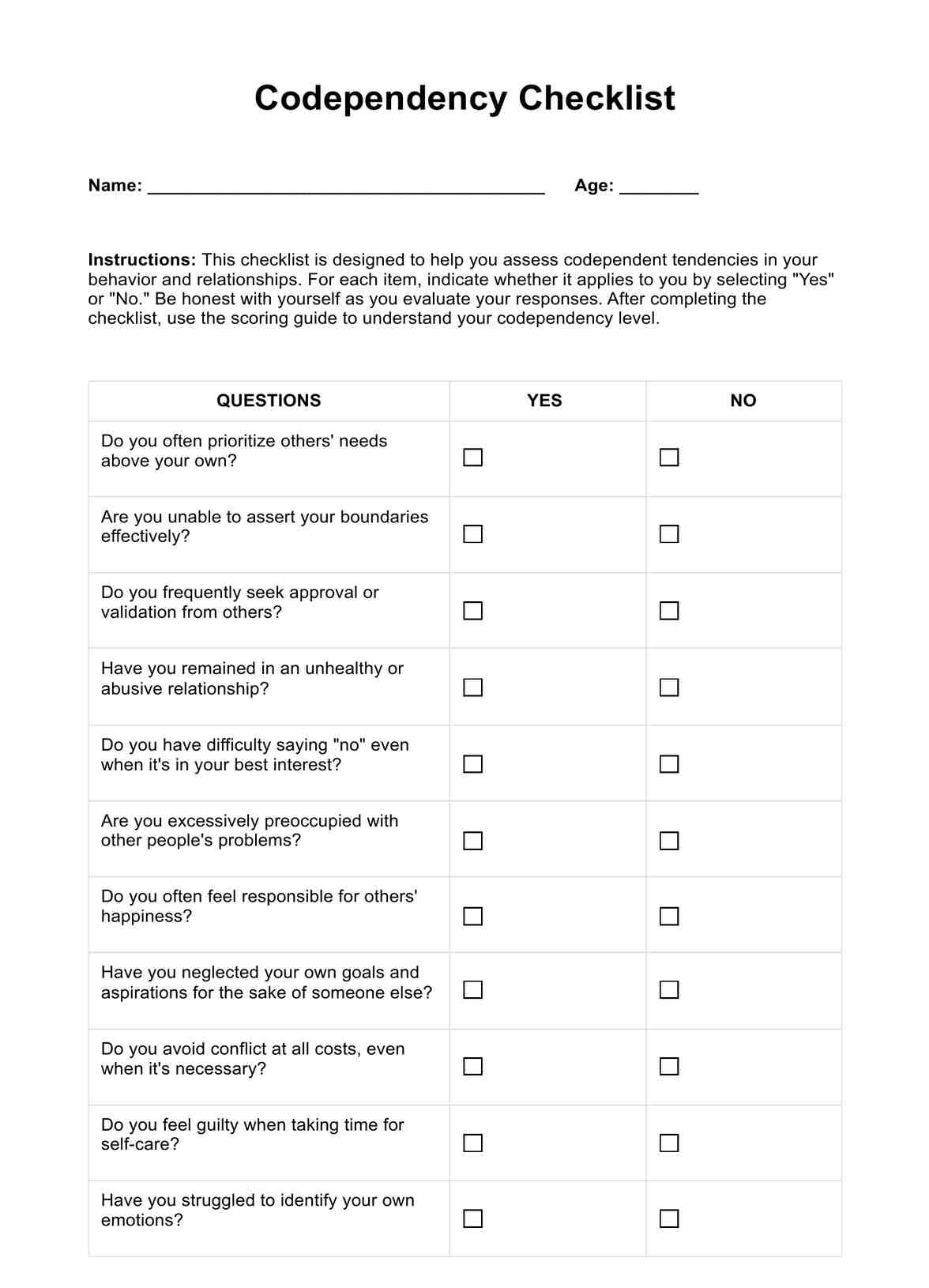Alexithymia Test
Have your patient answer the alexithymia test to gauge how difficult it is for them to describe and express their emotions.


What is alexithymia?
Before we discuss the Alexithymia Test, let’s briefly discuss what Alexithymia is.
Alexithymia is a psychological condition where the person who has it finds it difficult to do the following:
- Recognizing their emotions,
- Describing them,
- And expressing them.
By having the aforementioned difficulties, by extension, the person will also find it challenging to:
- Differentiate what emotional responses are and what bodily sensations are (the ones that emerge when a person is emotionally aroused),
- Include emotion in their thinking, so they tend to exclude emotions and often lean toward realistic and logical thinking,
- And understand the feelings of other people.
Alexithymia negatively impacts the capability to establish new emotional bonds and maintain healthy ones. People with alexithymia have difficulty regulating emotions and become more prone to having emotional outbursts and making decisions or performing actions out of impulse. In extreme cases, they commit self-harm.
This type of psychological condition is found to be common in people who have post-traumatic stress disorder, autism spectrum disorder, and depression. Research into this condition resulted in the belief that genetics and even a person’s surroundings can contribute to the emergence of this condition in a person.
Common treatments for this are Psychodynamic Therapy and Cognitive Behavioral Therapy.
Alexithymia Test Template
Alexithymia Test Example
How to use the Alexithymia Test
There are numerous Alexithymia Tests. The kind we will discuss for this guide is the one created by Jason Thompson in 2007, which is called the Online Alexithymia Questionnaire.
This questionnaire is a self-administered assessment, so even non-healthcare professionals can use this to assess themselves. It’s also relatively easy to use because all a person needs to do is answer thirty-seven items using preset answers.
Here are some of the items that need to be answered:
- When asked which emotion I'm feeling, I frequently don't know the answer.
- I'm unsure of which words to use when describing my feelings.
- When other people are hurt or upset, I have difficulty imagining what they are feeling.
- People tell me to describe my feelings more, as if I haven't elaborated enough.
- Sex as a recreational activity seems kinda pointless.
- People sometimes get upset with me, and I can't imagine why.
- When I am upset I find it difficult to identify the feelings causing it.
- I am not much of a daydreamer.
- I sometimes experience confusing sensations in my body.
- Some people have told me I am cold or unresponsive to their needs.
The person engaging with the test will answer based on the following preset choices:
- Strongly agree
- Agree
- Neutral
- Disagree
- Strongly disagree
As for scoring the test, just note the following:
- Strongly agree = 5 points
- Agree = 4 points
- Neutral = 3 points
- Disagree = 2 points
- Strongly disagree = 1 point
Items 3, 7, 8, 23, and 32 have inverse scoring, so if a person selects Strongly Disagree, that’s equal to 5 points, and if they pick Strongly Agree, that’s equal to 1 point.
The maximum score is 185. To calculate it, just add up the scores for all items.
The test has the following score ranges:
- 0 to 94 = No alexithymia
- 95 to 112 = Possible alexithymia
- 113 to 185 = Alexithymia is present
Do note that this is a screening test, so it’s best to conduct further testing. The current edition of the Diagnostic and Statistical Manual of Mental Disorders doesn’t have a criterion for it, so it’s best to conduct further tests and interviews before you diagnose a patient with alexithymia.
When is it best to use the Alexithymia Test?
If you’re wondering when it is best to use the Alexithymia Test, well, the answer will depend on who you are and what it’s for.
If you’re a mental healthcare professional, the best time to use this is when you’re handling patients who have autism spectrum disorder (level 1), post-traumatic stress disorder, and/or depression. It’s best to break the ice first and make them feel that they’re in a safe and non-judgmental space.
You should also establish rapport and trust to get them to share what they think about their feelings. If you’re dealing with a person who has alexithymia, you’ll likely have a difficult time getting them to talk about their feelings because they themselves have a hard time articulating their thoughts about it. Establishing trust and rapport might help make things easy for both of you.
Once your patient feels safe and they trust you enough, discuss what Alexithymia is so that they are aware of this concept/condition (if they’re not aware of it yet), what the Alexithymia Test is and what it’s for, and what you’re planning to do with the test. If they’re comfortable taking the test, issue this to them.
Now, if you’re not a mental healthcare professional, do note that you are allowed to take the Alexithymia Test whenever you feel like it. Its purpose is to be a free self-assessment. While you may answer this whenever you want, please don’t use this as a substitute for therapy or counseling. Also, don’t diagnose yourself with it, even if there’s a score range with a designation that you have it. It’s best to see a professional first to get an official diagnosis and treatment.
What are the benefits of using the Alexithymia Test?
It’s free!
One of the main reasons why Jason Thompson created this test is that there was limited access to alexithymia tests. Since healthcare should be accessible to all, it’s only fitting that alexithymia tests were made to be easily accessible and free. Since this is free, any healthcare professional can use this to assess their patients who are suspected of having alexithymia as well as patients who have PTSD, ASD, or depression. Even non-professionals who are wondering if they have alexithymia can use it.
It accounts for the “shortcomings” of certain alexithymia tests.
Earlier, we mentioned that this Alexithymia Test is just one of several other alexithymia tests. In fact, this version is not exactly clinically validated; hence we mentioned conducting further testing to properly gauge the patient before making an official diagnosis. Despite this, the test is still based on clinically-validated instruments. Three notable things that this test accounts for are:
- Being free and easily accessible to anyone;
- Some of the questions were altered in such a way that they refer to a problem with “spontaneous” or “unconscious” imagination instead of “conscious” imagination;
- The wording of the questions were modified so that they can easily be understood by those with alexithymia.
It can be used to monitor patients or yourself over time.
Another great thing about this test is that it can be used again and again!
If you’re a healthcare professional and you’ve developed and applied a treatment plan to address a patient (let’s stipulate that you opted for Cognitive Behavioral Therapy), it’s only natural for you to want to know how your patient is doing. If you want to see if they’re improving, you can schedule a routine checkup with them. Issue the Alexithymia Test to them again and see if their scores become lower. If they’re lower, they’re getting better, and your Cognitive Behavioral Therapy program is working. If not, check back at a later time. If they’re still not improving, you might want to adjust your treatment plan to see if the changes will do the trick.
Commonly asked questions
It can take you anywhere between 7 to 15 minutes.
Psychologists, psychiatrists, psychometricians, mental health therapists, counselors, and other mental healthcare professionals. This test is also a self-assessment, so even non-professionals can use it to gauge themselves. If you’re a non-professional and you stumbled upon this guide, feel free to use the template to gauge yourself! Just don’t substitute this for therapy/counseling, and don’t self-diagnose yourself. It’s best to see a professional for that.
The instructions are simple, so it shouldn’t be difficult to answer. Whatever difficulty that arises will come from the person answering it. There might be a chance that they will have to sit down and think long and hard about how much the items apply to them. The great thing about this test is that it accounts for people who actually have alexithymia, and it does so by phrasing the items in such a way that they can understand them.


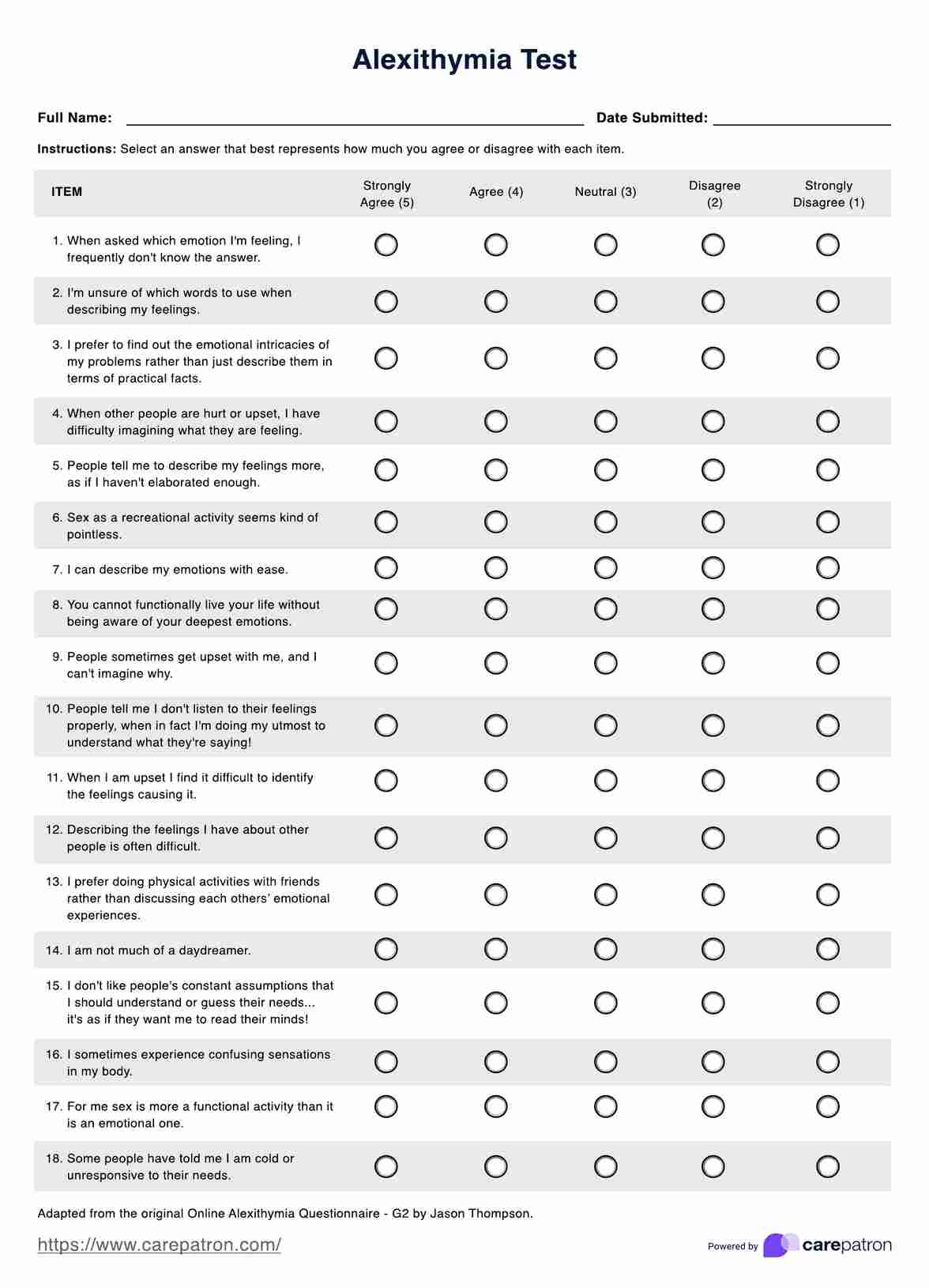
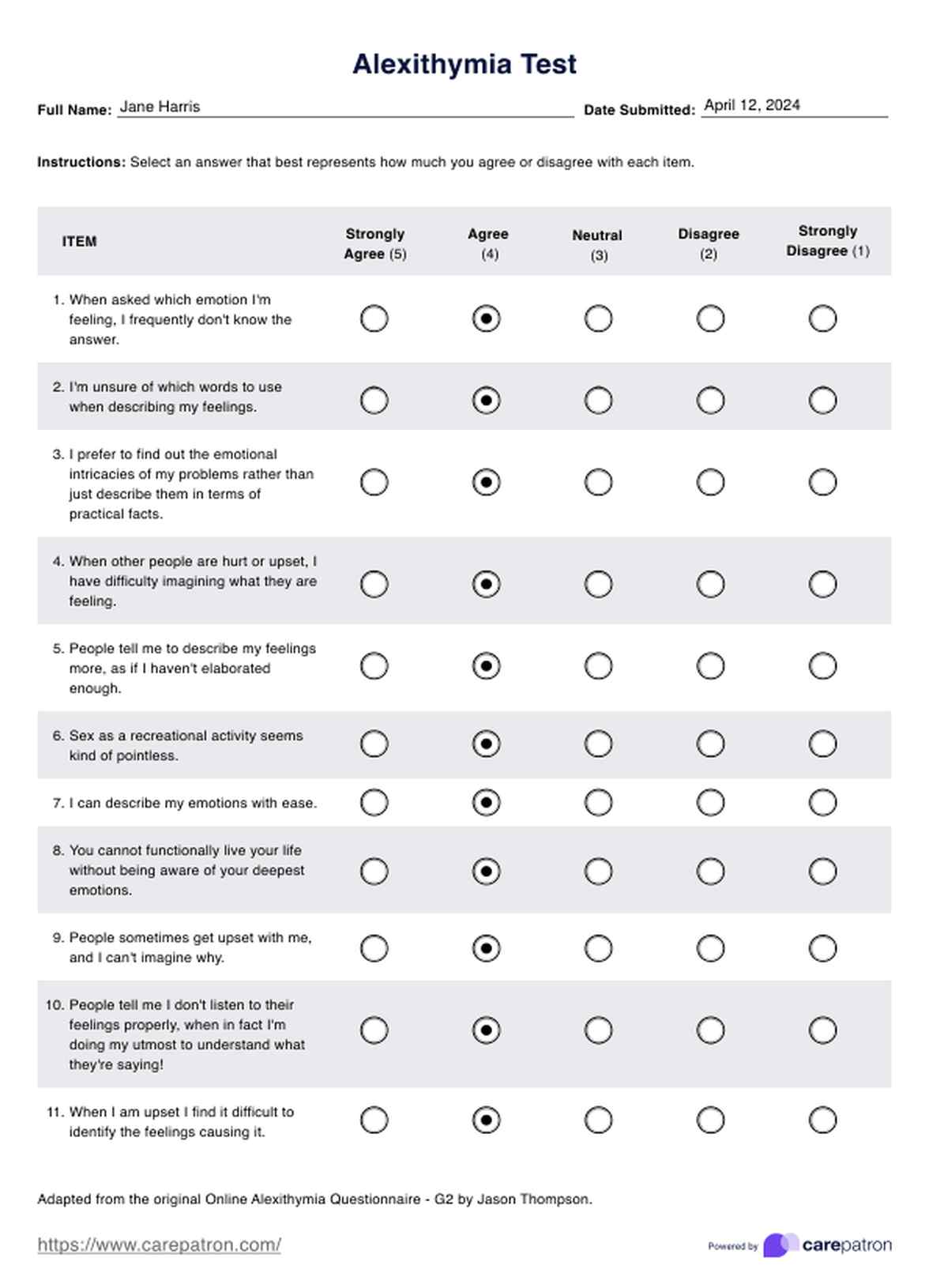

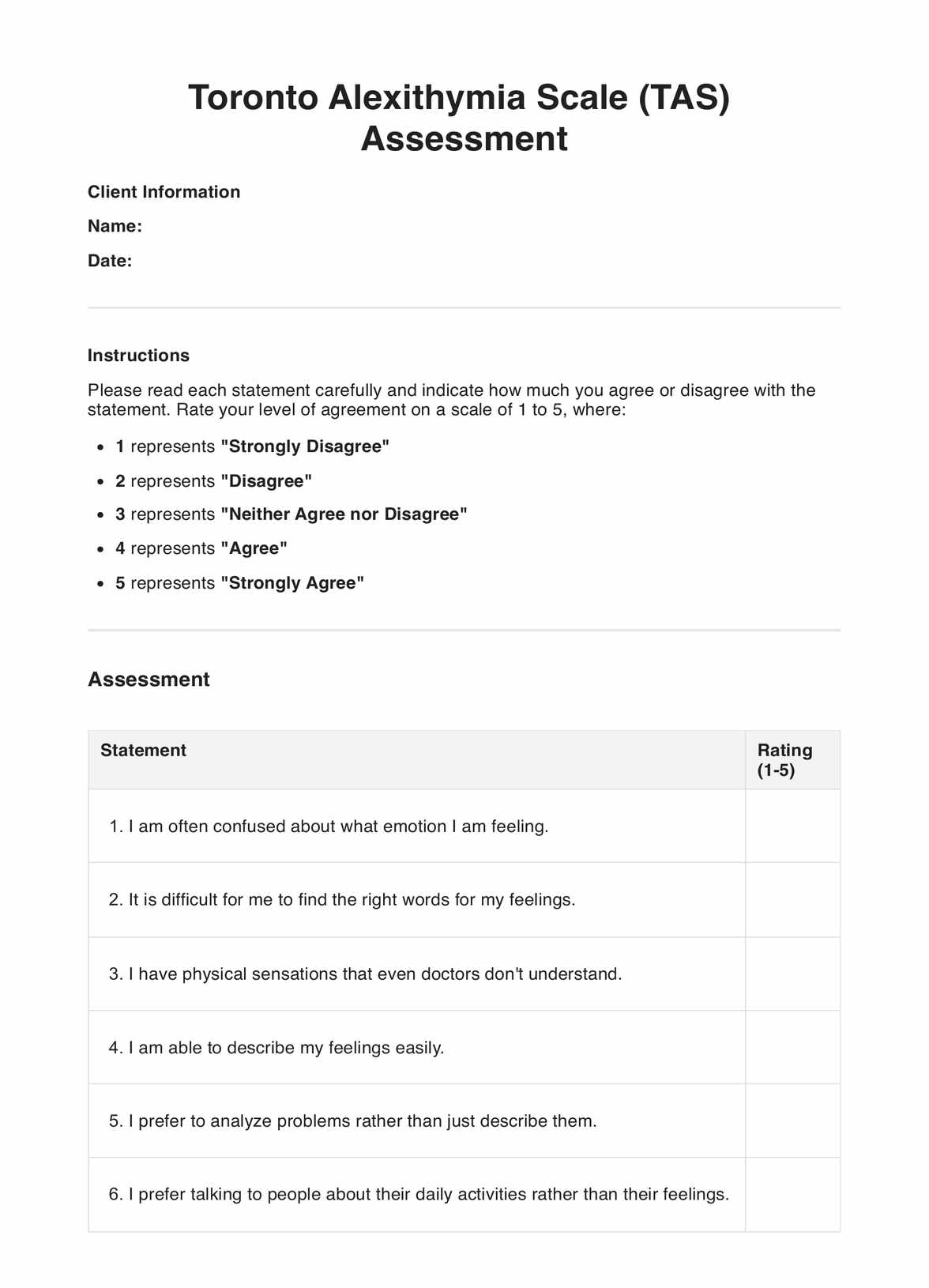















-template.jpg)




















































































